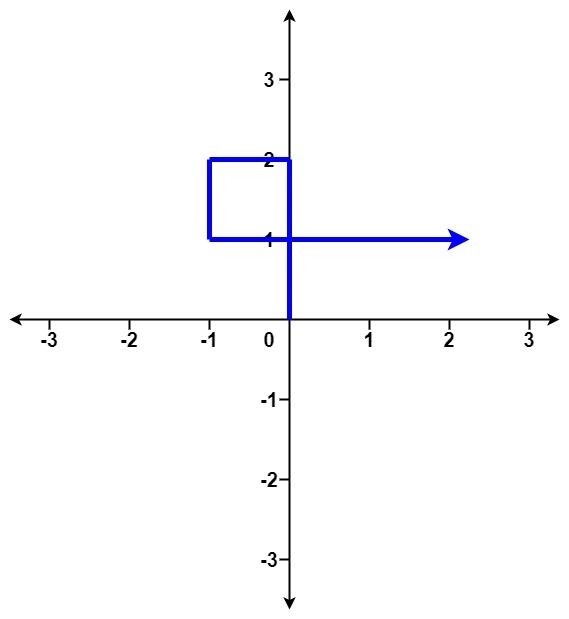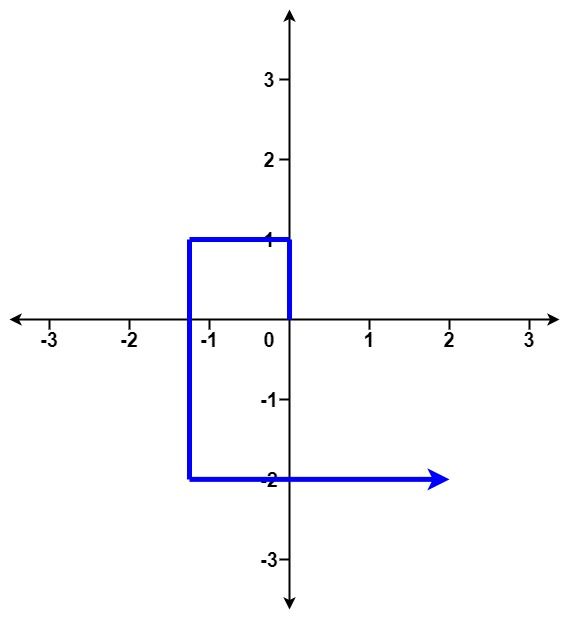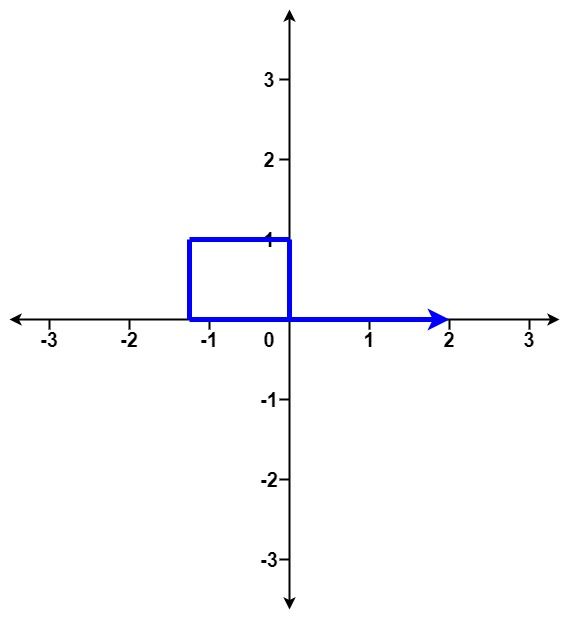You are given an array of integers distance.
You start at point (0,0) on an X-Y plane and you move distance[0] meters to the north, then distance[1] meters to the west, distance[2] meters to the south, distance[3] meters to the east, and so on. In other words, after each move, your direction changes counter-clockwise.
Return true if your path crosses itself, and false if it does not.
Example 1:
Input: distance = [2,1,1,2] Output: true
Example 2:
Input: distance = [1,2,3,4] Output: false
Example 3:
Input: distance = [1,1,1,1] Output: true
Constraints:
1 <= distance.length <= 5001 <= distance[i] <= 500
Follow up: Could you write a one-pass algorithm with O(1) extra space?
i-2
case 1 : i-1┌─┐
└─┼─>i
i-3
i-2
case 2 : i-1 ┌────┐
└─══>┘i-3
i i-4
case 3 : i-4
┌──┐
│i<┼─┐
i-3│ i-5│i-1
└────┘
i-2class Solution:
def isSelfCrossing(self, distance: List[int]) -> bool:
d = distance
for i in range(3, len(d)):
if d[i] >= d[i - 2] and d[i - 1] <= d[i - 3]:
return True
if i >= 4 and d[i - 1] == d[i - 3] and d[i] + d[i - 4] >= d[i - 2]:
return True
if i >= 5 and d[i - 2] >= d[i - 4] and d[i - 1] <= d[i - 3] and d[i] >= d[i - 2] - d[i - 4] and d[i - 1] + d[i - 5] >= d[i - 3]:
return True
return Falseclass Solution {
public boolean isSelfCrossing(int[] distance) {
int[] d = distance;
for (int i = 3; i < d.length; ++i) {
if (d[i] >= d[i - 2] && d[i - 1] <= d[i - 3]) {
return true;
}
if (i >= 4 && d[i - 1] == d[i - 3] && d[i] + d[i - 4] >= d[i - 2]) {
return true;
}
if (i >= 5 && d[i - 2] >= d[i - 4] && d[i - 1] <= d[i - 3] && d[i] >= d[i - 2] - d[i - 4] && d[i - 1] + d[i - 5] >= d[i - 3]) {
return true;
}
}
return false;
}
}class Solution {
public:
bool isSelfCrossing(vector<int>& distance) {
vector<int> d = distance;
for (int i = 3; i < d.size(); ++i)
{
if (d[i] >= d[i - 2] && d[i - 1] <= d[i - 3]) return true;
if (i >= 4 && d[i - 1] == d[i - 3] && d[i] + d[i - 4] >= d[i - 2]) return true;
if (i >= 5 && d[i - 2] >= d[i - 4] && d[i - 1] <= d[i - 3] && d[i] >= d[i - 2] - d[i - 4] && d[i - 1] + d[i - 5] >= d[i - 3]) return true;
}
return false;
}
};func isSelfCrossing(distance []int) bool {
d := distance
for i := 3; i < len(d); i++ {
if d[i] >= d[i-2] && d[i-1] <= d[i-3] {
return true
}
if i >= 4 && d[i-1] == d[i-3] && d[i]+d[i-4] >= d[i-2] {
return true
}
if i >= 5 && d[i-2] >= d[i-4] && d[i-1] <= d[i-3] && d[i] >= d[i-2]-d[i-4] && d[i-1]+d[i-5] >= d[i-3] {
return true
}
}
return false
}


